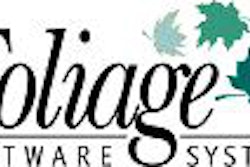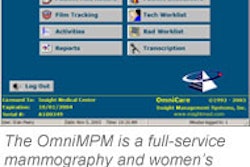Although they have different acronyms and may be thought of as two distinct systems, RIS and PACS are more like twins separated accidentally at birth, according to Fred Prior, Ph.D., from the Mallinckrodt Institute of Radiology in St. Louis.
"That accident being that one was developed in the late 1960s (RIS) and the other was developed in the 1980s (PACS)," added Prior, who is co-director of the electronic radiology laboratory at Mallinckrodt and a research associate professor of radiology at Washington University School of Medicine.
Today, it makes more sense to combine the two into a unified system. "At its core, a RIS is a database and a set of user applications that permit data entry and review. From a RIS point of view, PACS is simply a replacement for the analog film library, and digital image management becomes a new RIS function," Prior said during a presentation at the 2004 Society for Computer Applications in Radiology (SCAR) in Vancouver.
A panoply of players have entered the market, offering a range of products designed for multisite or enterprise-wide coverage, as well as applications tailored exclusively for the freestanding imaging center.
"The core functionality of a RIS has been fairly well set since around 1988," Prior said.
He cited the following functions as common to commercial RIS products:
- Patient registration
- Exam scheduling
- Patient tracking
- Report generation
- Billing
- Word processing
- Data evaluation
- Medical documentation
- Management functions
- Interfacing
- System utilities
- Film archive management
"Depending on the target application, such as a hospital or imaging center, current RIS suites may also include expanded report-generation capabilities such as speech recognition, practice and imaging protocol management, flexible workflow based on a rules engine, or a mammography module," he said.
In addition, a RIS in 2004 must also manage protected health information, and provide user-authentication and access-control functions. If the product is to be implemented in a hospital setting, it has to support interfaces to other information systems such as a master patient index, admission discharge and transfer, and enterprise order entry. RIS suites targeted at the imaging center market may include features such as Web-based order entry and scheduling applications and insurance coverage determination tools, Prior said.
"If you look at a request for proposal from a large academic medical center or a government entity today, you will see very detailed sets of requirements -- several hundred that define what is needed in a radiology information system," he noted. "They are very complicated systems with a very complicated interface."
With the push toward PACS in the past decade, the RIS film archive management functions have been largely supplanted by the image information and archive management system. According to Prior, the distinction between PACS and RIS is arbitrary.
Traditionally, RIS/PACS integration was accomplished via the use of an interface tool that allowed the PACS DICOM language to "speak" with the HL7 language of the RIS. More recently, RIS component integration has been showing up on the PACS workstation desktop, providing users with a seamless interface to some RIS functionality.
"True RIS/PACS fusion occurs when the RIS and the PACS clients share a common database and workflow engine," he said.
According to Prior, the evolution of RIS and PACS into a single, unified system is inevitable, as is the integration of the radiology department system into enterprise information frameworks.
"What you call the single RIS and PACS system going forward, I have no idea," he said. "But it will be there."
By Jonathan S. BatchelorAuntMinnie.com staff writer
June 11, 2004
Related Reading
Bush pledges support for electronic medical system, May 28, 2004
EMR integration with PACS enhances information access, May 21, 2004
Federal government to push for paperless hospitals, May 7, 2004
U.S. makes SNOMED available through library, May 7, 2004
Study uncovers unexpected costs of PACS adoption, May 4, 2004
Copyright © 2004 AuntMinnie.com



















